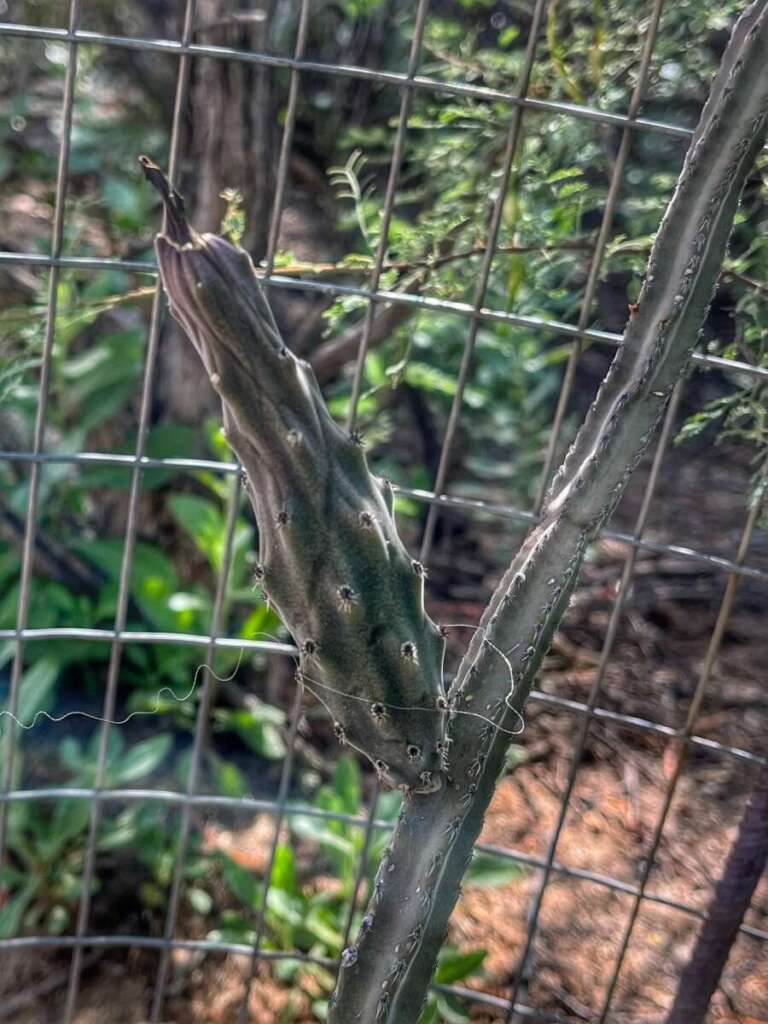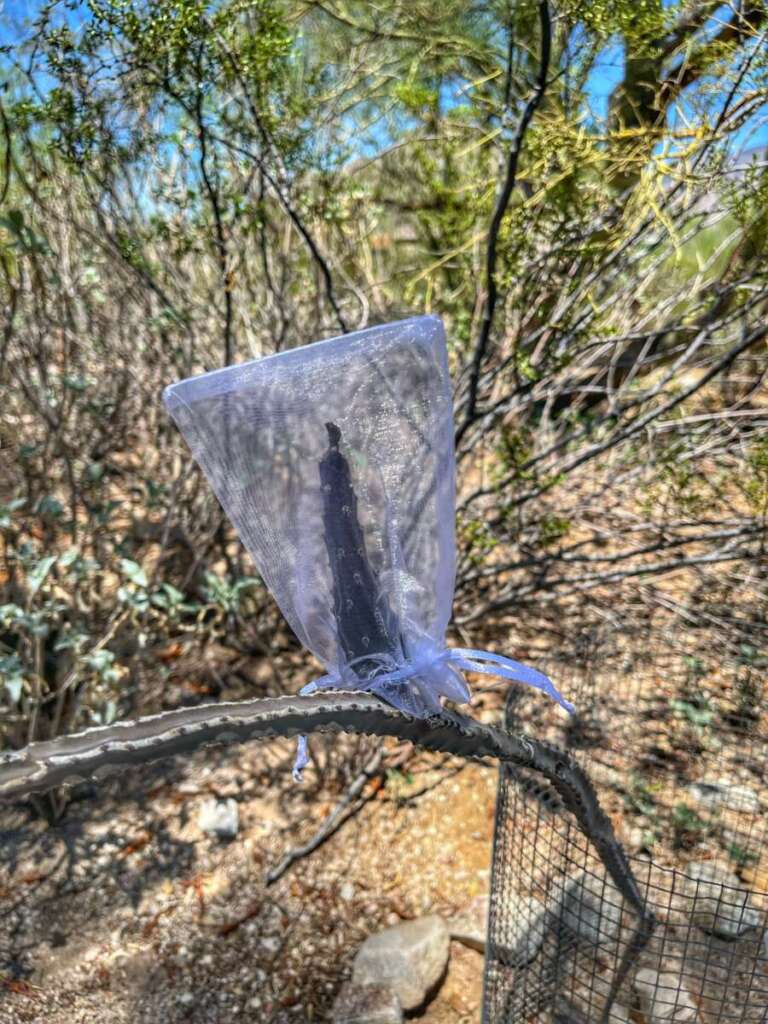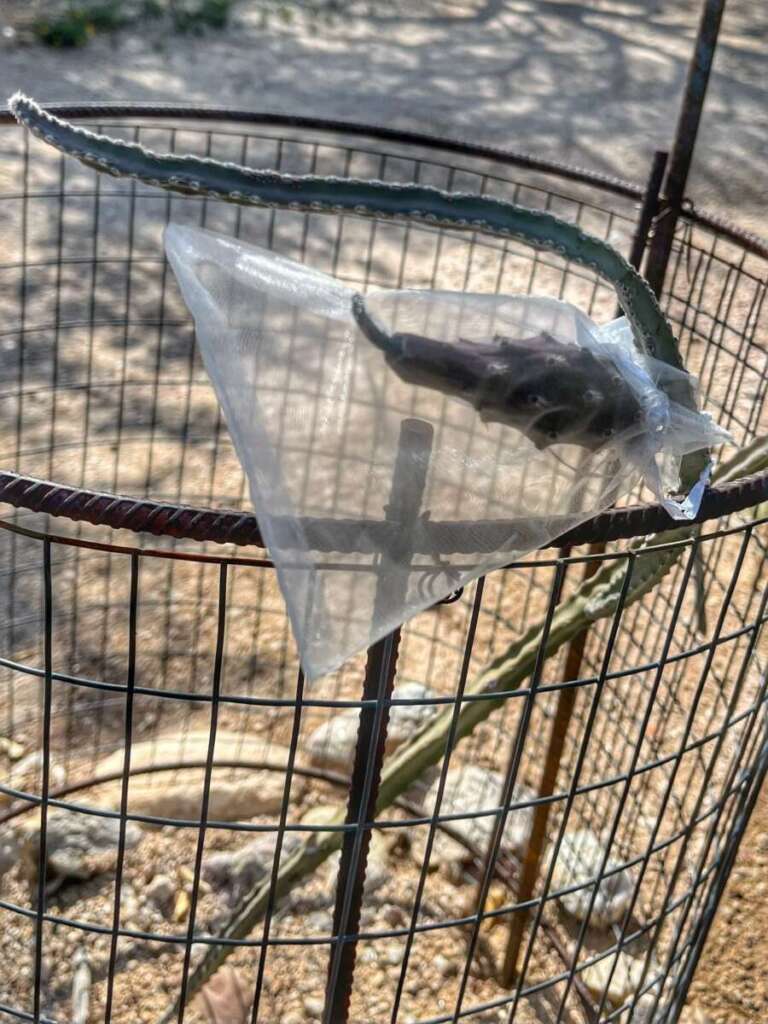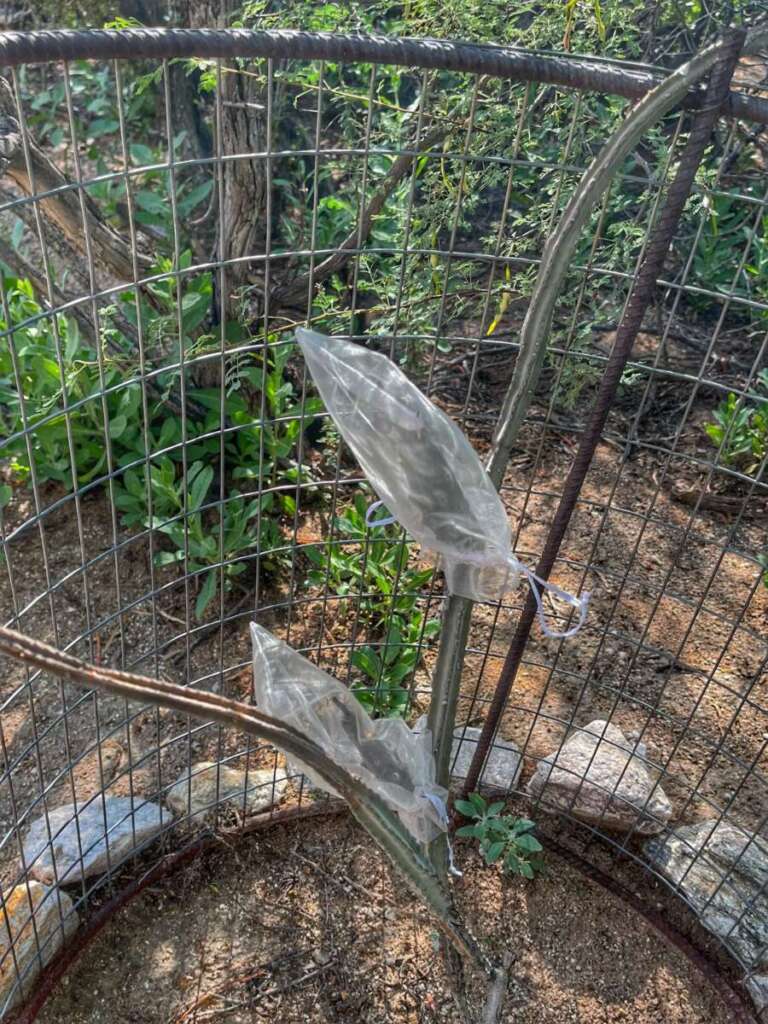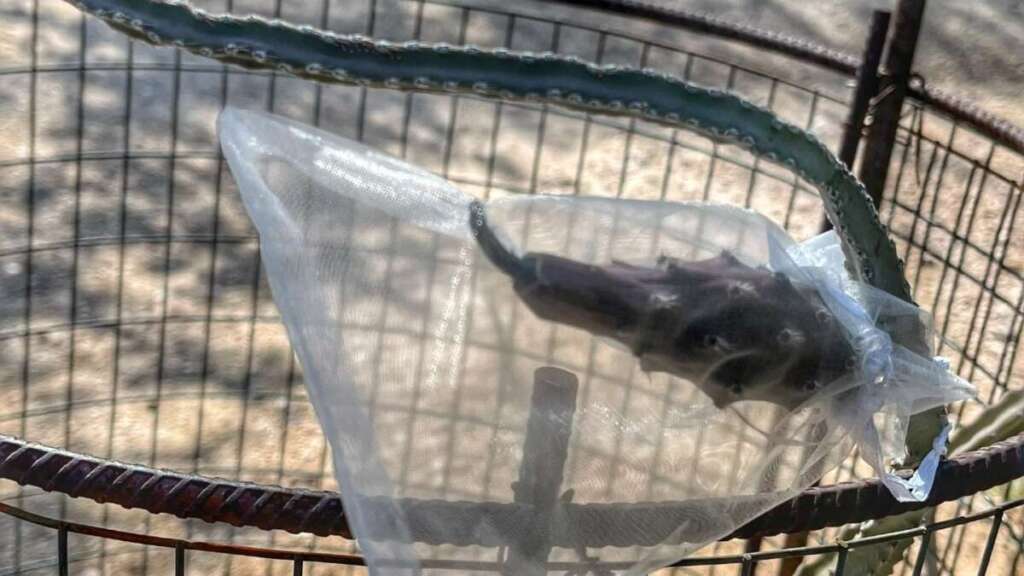
Seeking Royal Seeds
August 9, 2022We take our Peniocereus greggii quite cereusly, but rest assured we are not dressing up The Queen for her coronation! The white organza bags you see covering The Queen’s ripening fruit allow sunlight and air in while keeping pests out. This simple protective measure will ensure we harvest the fruit before hungry packrats beat us to it. When it’s time, the Propagation Team will harvest the fruit, then cut it in half to scoop the seeds out of the interior. The seeds are then rinsed in a sieve, dried, and finally stored in our seed collection until it’s planting season.
Peniocereus greggii bloom in mass for one or two nights only. The mass-blooming increases chances of pollination. The highly aromatic blooms attract pollinators like the white-lined sphinx moth (Hyles lineata) who use their remarkably long proboscis (tubular organ for sucking) to extract nectar from flowers while transferring pollen from one flower to another.
After pollination, ovoid fruits form. The fruit is typically three inches long and turns bright red to orange when ripe. Ripe fruit attracts birds who savor the fleshy fruit and disperse the tiny black seeds in their droppings. Since germination in the wild is never guaranteed, we are proactively collecting the ripe fruit in the next couple of weeks to ensure future generations of Queens and the survival of our unique living collection.
Here’s How You Can Help!
We are asking you, our plant-loving community, to help ensure the survival of this extraordinary living collection! But before you do, ask yourself:
- Do you have a Peniocereus greggii?
- Did your Peniocereus greggii get pollinated this summer?
- Not all night-blooming cacti are Peniocereus greggii, so are you sure it’s a Peniocereus greggii?
If you answered “yes” to all of the above, please send images of your plant and its fruit to info@tohonochul.org so we can confirm the identification and coordinate acquisition.
Not Sure If Yours Is A Peniocereus greggii?
Here’s how you can tell:
- 5-face, sometimes 4 on the main stem of the plant
- Areoles (place where spines grow out) are just over 1/16 of an inch (~2 mm) in diameter, just under 1/2 inch apart (~10 mm), oval in shape with spines sticking out along the length of the stem with more spines pointing downwards than upwards
- Stems are 1/2 inch to 3/4 inches in diameter. If 1 inch or wider, then it is likely not Peniocereus greggii
- Peniocereus marianus, Peniocereus maculatus, Peniocereus johnstonii are similar, however they are not found naturally in the wild here (originally from Southern Sonora, Oaxaca, and Baja California respectively), and tend to be wider than greggii, 1 inch to 1 and 1/2 inches in diameter
The more fruit we receive means the more seeds we can collect and propagate. And, if you would like to keep your seeds to further your special collection, be sure to use the organza bag technique to safeguard the fruit until harvest time.

